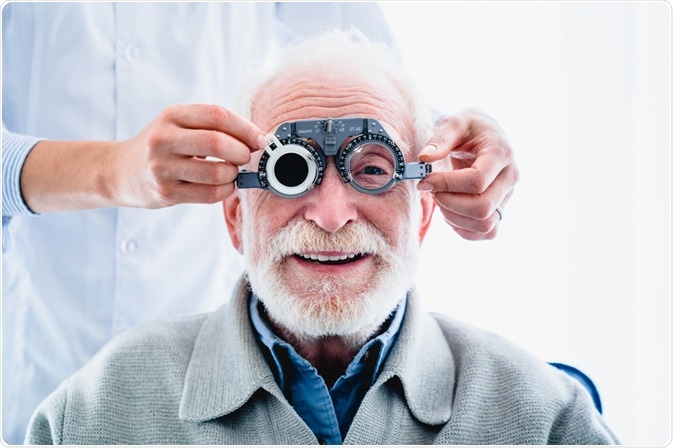Myopia, which is also known as nearsightedness, represents a vision condition in which an object close to the eye is seen clearly, whereas objects farther away appear blurred. The name is derived from the Greek term “muopia,” which means “close to the eyes.”

Image Credit: Inside Creative House / Shutterstock.com
Myopia occurs if the eyeball is too long or the cornea, which is the clear outermost layer of the eye, has too much of a curvature. As a result, the light that enters the eye lacks adequate focus, thereby causing distant objects to appear blurred.
Myopia is a highly significant problem due to its high prevalence and contribution to visual morbidity. Generally, myopia initially occurs in school-age children and, as the eye continues to grow throughout childhood, the condition typically progresses until the age of 20. However, myopia can also be a significant problem in adulthood due to visual stress or various health conditions such as diabetes mellitus.
Defining myopia
In order to obtain clear vision, the eye must accurately focus an image in space on the retina. The focusing power of the cornea and the length of the eye represent the main ocular determinants of refraction. Refractive error is commonly measured in diopters (D), and a minus sign is a designation of myopia. Mild myopia ranges from 0 D to -1.5 D, moderate from -1.5 D to -6.0 D, whereas high myopia has -6.0 D or more.
The cause and adequate treatment of myopia have been debated for decades; however, the exact mechanism of the disease remains unclear. Prolonged near work was once suspected to lead to progressive myopia through the direct physical effect of prolonged accumulation, but current theory suggests that prolonged near work leads to myopia as the consequence of the blurred retinal image that occurs during near focus.
Progression of myopia
Both environmental and genetic factors are implicated in the onset and progression of myopia. Twin studies represent the strongest conclusive evidence that myopia is inherited since background contributions are diminished. Research has shown that having one or two nearsighted parents is a significant risk factor for the development of the condition. Furthermore, myopia can occur in association with a large number of genetic syndromes.
Severe myopia predisposes the affected individual to various eye disorders later in life, which might include retinal detachment, glaucoma, cataracts, and macular degeneration. These complications can lead to permanent visual impairment, making myopia the sixth leading cause of vision loss. Therefore, it is of the uttermost importance to schedule regular eye examinations by an ophthalmologist in order to observe changes in the retina that might lead to retinal detachment, as well as other vision problems.
Myopia can be broadly classified by age of onset as school-age or adult-onset. The classification by a clinical entity is usually employed in a clinical setting, which differentiates between simple myopia, nocturnal myopia, degenerative myopia, pseudomyopia, and induced, or acquired, myopia. The aforementioned classification by degree of myopia according to the refractive error in diopters is also often used.
Myopia: A Treatable Epidemic | Dr. Lance Kugler | TEDxOmaha
Epidemiology of the condition
The incidence of myopia has increased over the past 50 years. In fact, estimates now indicate that this condition affects around 2.6 billion people worldwide. The disease epidemiology within a sampled population often varies with age, sex, race, ethnicity, occupation, place of residence, environment, as well as other factors. The difference in data collection methods and variability in testing hinders comparisons of prevalence and progression of the disease.
In the United States, nearsightedness affects almost 30% of the population. In Americans between the ages of 12 and 54, it has been demonstrated that myopia affects African Americans less than Caucasians. Recent studies have shown that Asians have the highest prevalence of disease (18.5%), followed by Hispanics (13.2%). Conversely, Caucasians had the lowest prevalence of myopia (4.4%), which did not significantly differ from African Americans (6.6%).
A myriad of studies has shown that the incidence of myopia increases with the level of education. Some research also pointed to the correlation between myopia and a higher IQ, perhaps due to the confounding factor of formal education. Other studies correlated certain personal traits, such as values, school achievements, time spent in reading, language abilities, and sports activities, with the occurrence of myopia in the students.
Conclusion
Myopia is considered one of the most common disorders of the eye; therefore, proper measures to control this rapid surge in incidence are urgently needed. Steady progress has been made in the field of human myopia genetics, but there is much still to be done. Environmental factors that also have a considerable influence on the development of myopia must be addressed, and every patient should be advised about available treatment options.
References
Further Reading